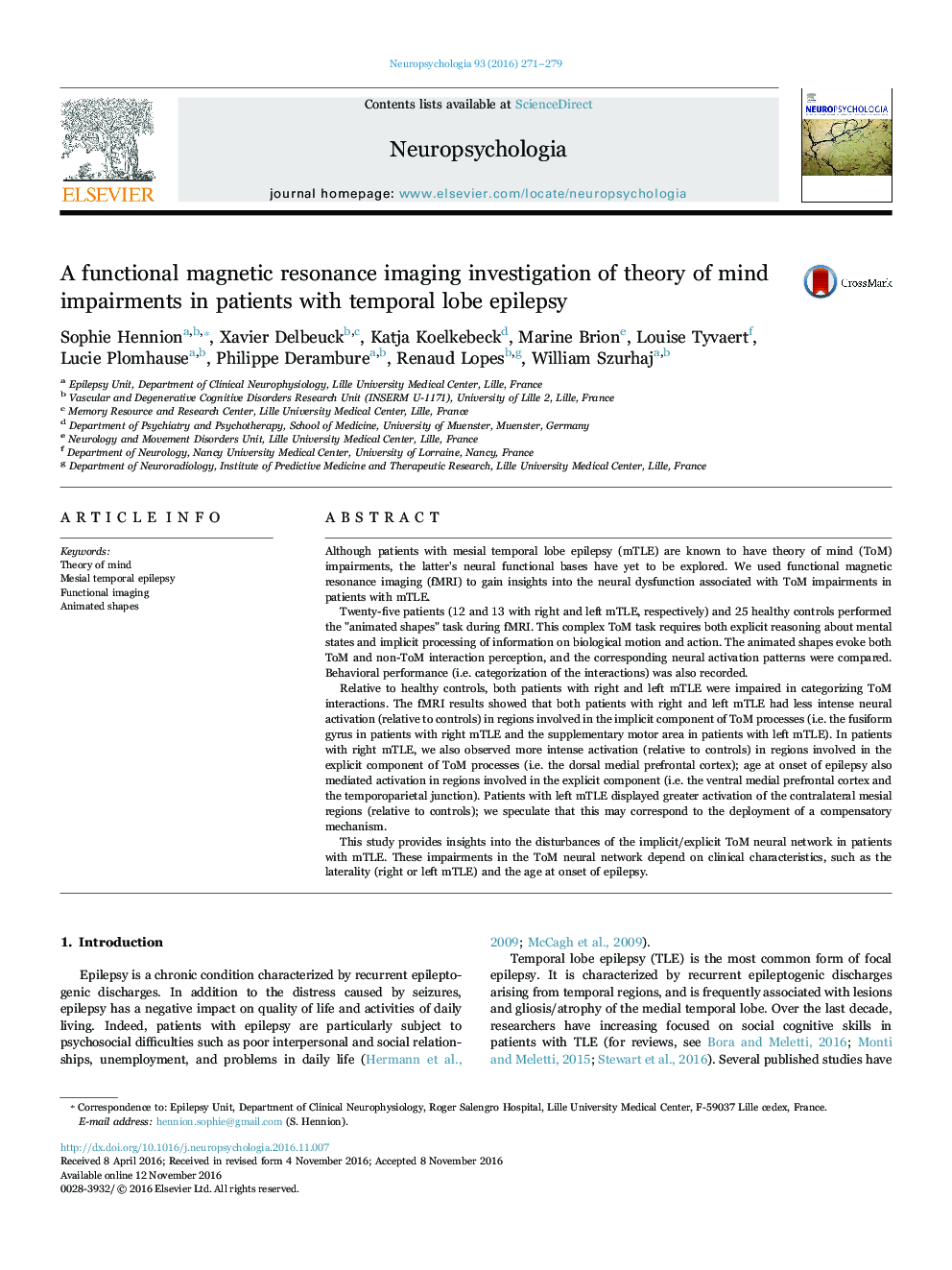| Article ID | Journal | Published Year | Pages | File Type |
|---|---|---|---|---|
| 5045334 | Neuropsychologia | 2016 | 9 Pages |
â¢We explored the neural basis of ToM disorders in mTLE with an animated shapes task.â¢Right and left mTLE patients displayed ToM impairments, relative to controls.â¢Recruitment of the implicit ToM network was lower in mTLE patients than in controls.â¢Recruitment of the explicit ToM network was greater in right mTLE patients.â¢Recruitment of this ToM network was influenced by age at onset in right mTLE.
Although patients with mesial temporal lobe epilepsy (mTLE) are known to have theory of mind (ToM) impairments, the latter's neural functional bases have yet to be explored. We used functional magnetic resonance imaging (fMRI) to gain insights into the neural dysfunction associated with ToM impairments in patients with mTLE.Twenty-five patients (12 and 13 with right and left mTLE, respectively) and 25 healthy controls performed the "animated shapes" task during fMRI. This complex ToM task requires both explicit reasoning about mental states and implicit processing of information on biological motion and action. The animated shapes evoke both ToM and non-ToM interaction perception, and the corresponding neural activation patterns were compared. Behavioral performance (i.e. categorization of the interactions) was also recorded.Relative to healthy controls, both patients with right and left mTLE were impaired in categorizing ToM interactions. The fMRI results showed that both patients with right and left mTLE had less intense neural activation (relative to controls) in regions involved in the implicit component of ToM processes (i.e. the fusiform gyrus in patients with right mTLE and the supplementary motor area in patients with left mTLE). In patients with right mTLE, we also observed more intense activation (relative to controls) in regions involved in the explicit component of ToM processes (i.e. the dorsal medial prefrontal cortex); age at onset of epilepsy also mediated activation in regions involved in the explicit component (i.e. the ventral medial prefrontal cortex and the temporoparietal junction). Patients with left mTLE displayed greater activation of the contralateral mesial regions (relative to controls); we speculate that this may correspond to the deployment of a compensatory mechanism.This study provides insights into the disturbances of the implicit/explicit ToM neural network in patients with mTLE. These impairments in the ToM neural network depend on clinical characteristics, such as the laterality (right or left mTLE) and the age at onset of epilepsy.
